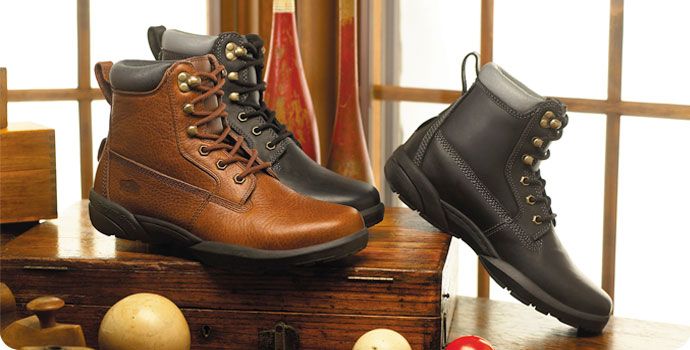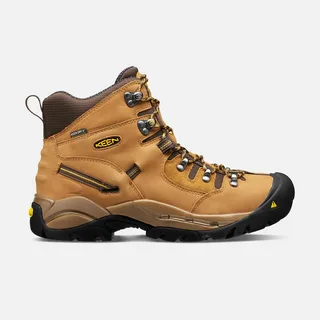Are you looking for diabetic-shoes for men that offer hassle-free comfort? If so, you’re in luck! Diabetic-Shoes for Men are the perfect choice for those who have diabetes and need a comfortable, reliable shoe they can depend on. Not only are these shoes designed to provide superior comfort and support, but they also come with a range of features that make them easy to wear and maintain. In this blog post, we will discuss the benefits of diabetic shoes for men and why they are the perfect choice for diabetic men.
Understanding Diabetes and Foot Health
Diabetes significantly impacts foot health. Elevated blood sugar levels can damage nerves and blood vessels, leading to a condition known as diabetic neuropathy. This can cause loss of sensation in the feet, making it challenging to detect injuries or sores. Diabetes also impairs blood circulation, slowing the body’s natural healing process. Even minor wounds can escalate into serious infections or ulcers.
Left untreated, these complications may necessitate amputation. Proactive foot care is vital for individuals with diabetes. This includes daily inspections, proper hygiene, comfortable and supportive footwear, and regular check-ups with a healthcare provider. Managing blood sugar levels through diet and medication is equally crucial to minimize the risk of diabetic foot complications and ensure overall well-being.
Causes and Symptoms of Diabetes
Diabetes is a complex metabolic disorder characterized by elevated blood sugar levels, primarily caused by inadequate insulin production or poor insulin utilization. Type 1 diabetes results from an autoimmune response that destroys insulin-producing beta cells in the pancreas. It typically develops in childhood or adolescence and requires lifelong insulin therapy.
Type 2 diabetes, the more common form, often develops in adulthood. It stems from genetic factors, a sedentary lifestyle, obesity, and poor diet. In this type, the body becomes insulin resistant, and the pancreas struggles to produce sufficient insulin. Common symptoms of diabetes include excessive thirst, frequent urination, unexplained weight loss, increased hunger, fatigue, and blurred vision.
Some individuals may experience slow wound healing, recurrent infections, and tingling or numbness in extremities due to nerve damage. Left untreated, diabetes can lead to serious complications, such as cardiovascular disease, kidney problems, vision impairment, and neuropathy. Early detection, lifestyle modifications, and appropriate medical management are crucial in managing diabetes and preventing its complications.
The Importance of Regular Check-Ups
Regular check-ups are a crucial part of managing diabetes and maintaining overall health. These appointments allow healthcare professionals to monitor your blood sugar levels, assess the condition of your feet, and detect any potential complications early on. By scheduling regular check-ups, you can stay on top of your diabetes management and make any necessary adjustments to your treatment plan.
During these appointments, your healthcare provider may conduct a thorough foot examination, checking for any signs of nerve damage, poor circulation, or foot ulcers. They may also provide education on proper foot care and offer recommendations for diabetic shoes that can help protect your feet from injury and provide necessary support. Regular check-ups allow for open communication with your healthcare team, allowing you to ask questions, address concerns, and receive personalized guidance.
Benefits of Diabetic Shoes for Men
Diabetic shoes offer numerous benefits for men living with diabetes. These shoes prioritize foot health and comfort, featuring extra depth and a wide toe box to accommodate custom orthotics and reduce pressure points. The seamless interior minimizes friction and the risk of developing blisters, ulcers, or calluses, which can be especially detrimental for individuals with reduced sensation due to neuropathy.
The cushioning and support provided by diabetic shoes for men protect against foot strain and injury, helping to prevent complications. Additionally, their breathable materials and moisture-wicking properties maintain a dry and healthy environment for the feet, reducing the likelihood of fungal infections. Choosing diabetic shoes tailored to individual needs can significantly improve comfort, mobility, and overall well-being for men with diabetes, enhancing their quality of life and minimizing the risk of serious foot-related complications.
Features To Look For In Diabetic-Shoes
When searching for the perfect diabetic shoes, there are a few key features to look out for. Firstly, finding shoes with a seamless interior and cushioned soles is important. This helps to reduce friction and pressure points that can lead to blisters, calluses, and ulcers. Additionally, diabetic shoes should have a spacious toe box to allow for proper circulation and prevent toe deformities. Another feature to consider is shock absorption.
Diabetic shoes with superior shock absorption can help minimize the impact on joints, especially for individuals with reduced foot sensation. Adjustable closures, such as Velcro straps or laces, are also beneficial as they allow for a customized fit and maximum comfort. Breathable materials are another crucial feature to look for in diabetic shoes. These materials help prevent excessive moisture buildup and keep feet cool and dry, which can help prevent fungal infections.
How to Choose the Right Diabetic-Shoe for You
Choosing the right diabetic shoe is crucial for maintaining foot health and overall comfort. Here are some tips to help you make the best decision for your needs. First, consider the fit. Diabetic shoes should have a roomy toe box to allow proper circulation and prevent pressure points. Make sure the shoes fit well without rubbing or squeezing your feet.
Next, think about the closure. Adjustable closures, such as Velcro straps or laces, are ideal because they allow you to customize the fit and ensure maximum comfort. Consider the level of support you need. Diabetic shoes should provide excellent arch support and cushioning to minimize the risk of foot complications. Look for shoes with a shock-absorbing sole to protect your joints.
Choosing shoes made from breathable materials is also important to prevent excessive moisture buildup and reduce the risk of fungal infections. Lastly, consult with your healthcare professional. They can offer personalized advice and recommend specific brands or styles that cater to your specific foot needs.
Breaking In Your Diabetic-Shoes
When you first get your new pair of diabetic shoes, giving them time to break in and adjust to your feet is important. Breaking in your diabetic shoes properly can help ensure maximum comfort and prevent any potential discomfort or blisters. Here are a few tips to help you break into your diabetic shoes smoothly. First, start by wearing your new shoes for short periods.
This will allow your feet to gradually get accustomed to the fit and feel of the shoes. As you feel more comfortable, you can gradually increase the time you wear them. Another helpful tip is to wear your diabetic shoes with the same socks or inserts you plan to use regularly. This will help you better understand how the shoes will fit and feel during everyday use.
If you notice any areas of discomfort or rubbing, you can use moleskin or gel inserts to provide extra cushioning and protection. This can help alleviate any pressure points and prevent blisters or sore spots. Lastly, be patient. It may take time for your feet to fully adjust to the new shoes. But once they do, you’ll be able to enjoy the comfort and support that diabetic shoes are designed to provide.
Maintaining Proper Foot Care as a Diabetic
Here are some key tips to help you maintain proper foot care as a person with diabetes:
- Inspect your feet daily: Take the time to thoroughly examine your feet every day, checking for any cuts, blisters, or sores. If you notice any issues, contact your healthcare professional immediately.
- Practice good hygiene: Wash your feet daily with warm water and mild soap, and dry them thoroughly, especially between the toes. Moisturize your feet with lotion, avoiding the areas between the toes to prevent excess moisture buildup.
- Trim toenails carefully: Cut your toenails straight across and avoid cutting them too short to prevent ingrown toenails. If you have difficulty trimming your nails, consider seeking professional help from a podiatrist.
- Wear diabetic socks: Choose socks made from breathable materials that promote proper airflow and help prevent excessive moisture buildup. Diabetic socks are designed to provide cushioning and minimize pressure points, reducing the risk of blisters or ulcers.
- Avoid going barefoot: Always wear shoes or slippers, even when indoors, to protect your feet from potential injuries.
- Wear diabetic shoes: Invest in a pair of diabetic shoes specifically designed to provide comfort, support, and protection for diabetic feet. Look for features like a roomy toe box, cushioned soles, and adjustable closures for a customized fit.
- Keep blood sugar levels in control: By monitoring and managing your blood sugar levels, you can help prevent or reduce the risk of diabetic foot complications.
Frequently Asked Questions
1. Are diabetic shoes only for people with severe foot complications?
Not at all! Diabetic shoes benefit anyone with diabetes, regardless of the severity of their foot complications. They are designed to prevent blisters, calluses, and ulcers, making them a great choice for comfortable and supportive footwear.
2. Can I wear diabetic shoes with orthotics?
Absolutely! Many diabetic shoes have removable insoles, allowing you to insert your orthotics for personalized support. This makes it easy to combine the benefits of diabetic shoes with any additional foot support you may need.
3. Are diabetic shoes for men covered by insurance?
In some cases, yes. It depends on your insurance coverage and specific circumstances. It’s best to check with your insurance provider to see if diabetic shoes for men are covered under your plan.
4. Can I wear diabetic shoes as everyday shoes?
Yes, diabetic shoes are designed to be worn as everyday shoes. They offer the comfort and support you need while still looking stylish. Many diabetic shoe styles are available, including sneakers, dress shoes, and sandals so you can find a pair for any occasion.
5. Can I wash my diabetic shoes?
Yes, most diabetic shoes can be cleaned using mild soap and water. However, checking the manufacturer’s instructions is always best to ensure proper care and maintenance.
Conclusion
In conclusion, Diabetic-Shoes for Men are a game-changer for individuals with diabetes. These shoes offer unmatched comfort, support, and protection for your feet, helping to prevent foot complications and maintain overall health. With features like cushioned soles, adjustable closures, and breathable materials, diabetic shoes prioritize your foot health while providing a customizable fit. Regular check-ups and proper foot care are crucial for managing diabetes and preventing complications. By working closely with your healthcare team and following their recommendations, you can ensure that your feet stay happy and healthy. So, don’t hesitate to invest in diabetic shoes catering to your needs. Your comfort and well-being are worth it. Take care of your feet, and they will take care of you!



